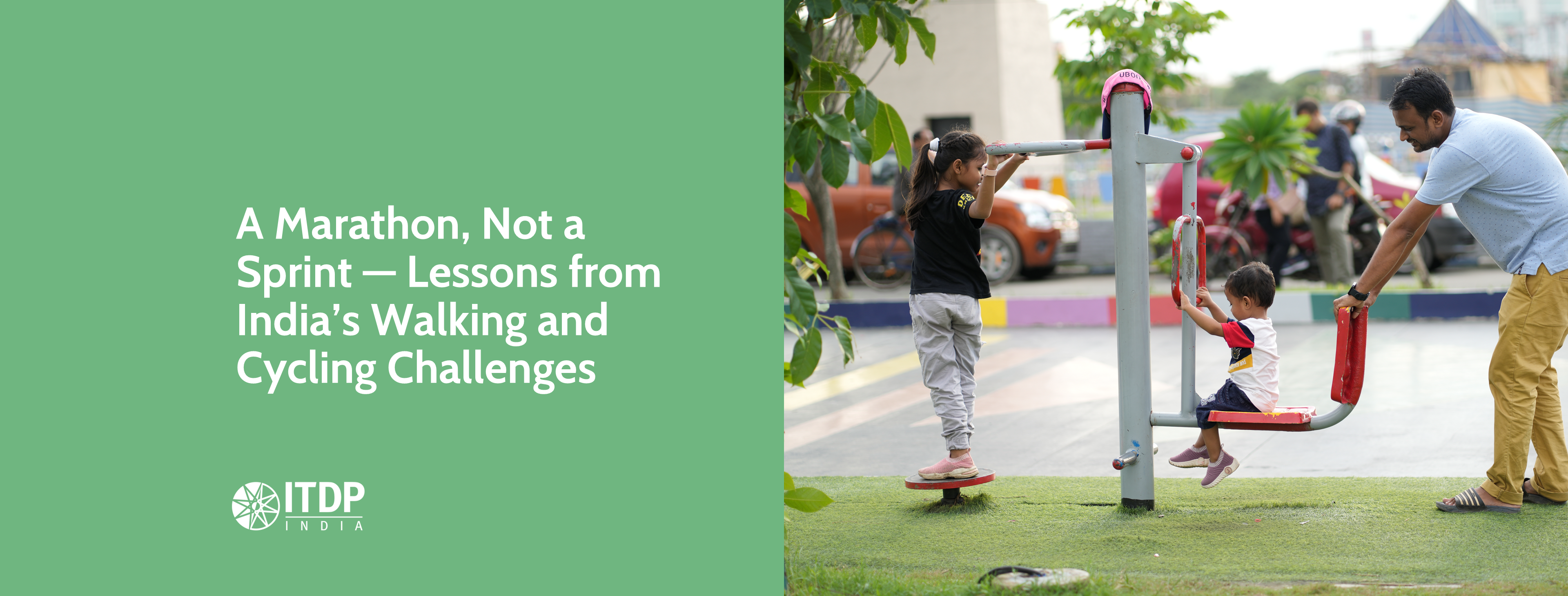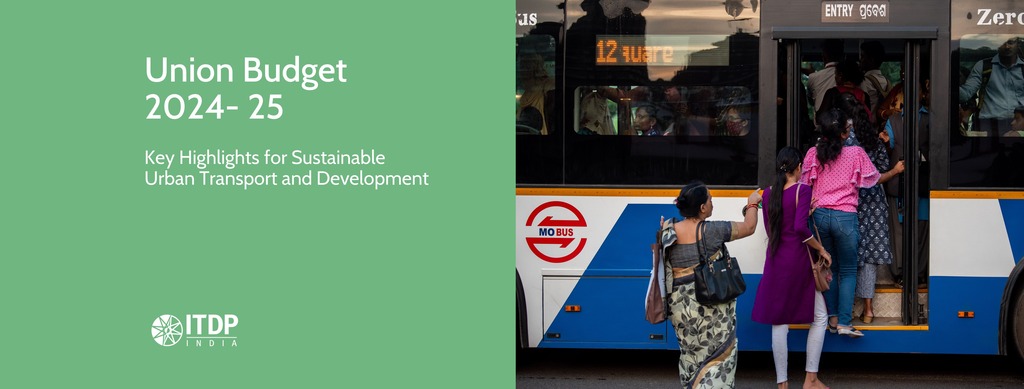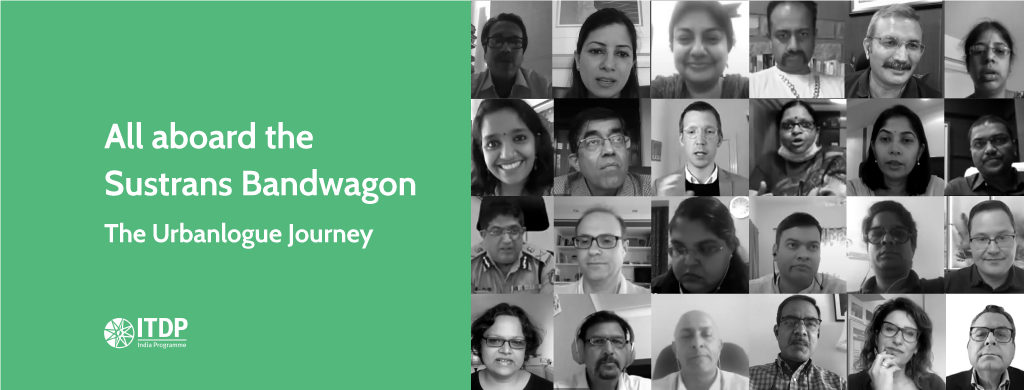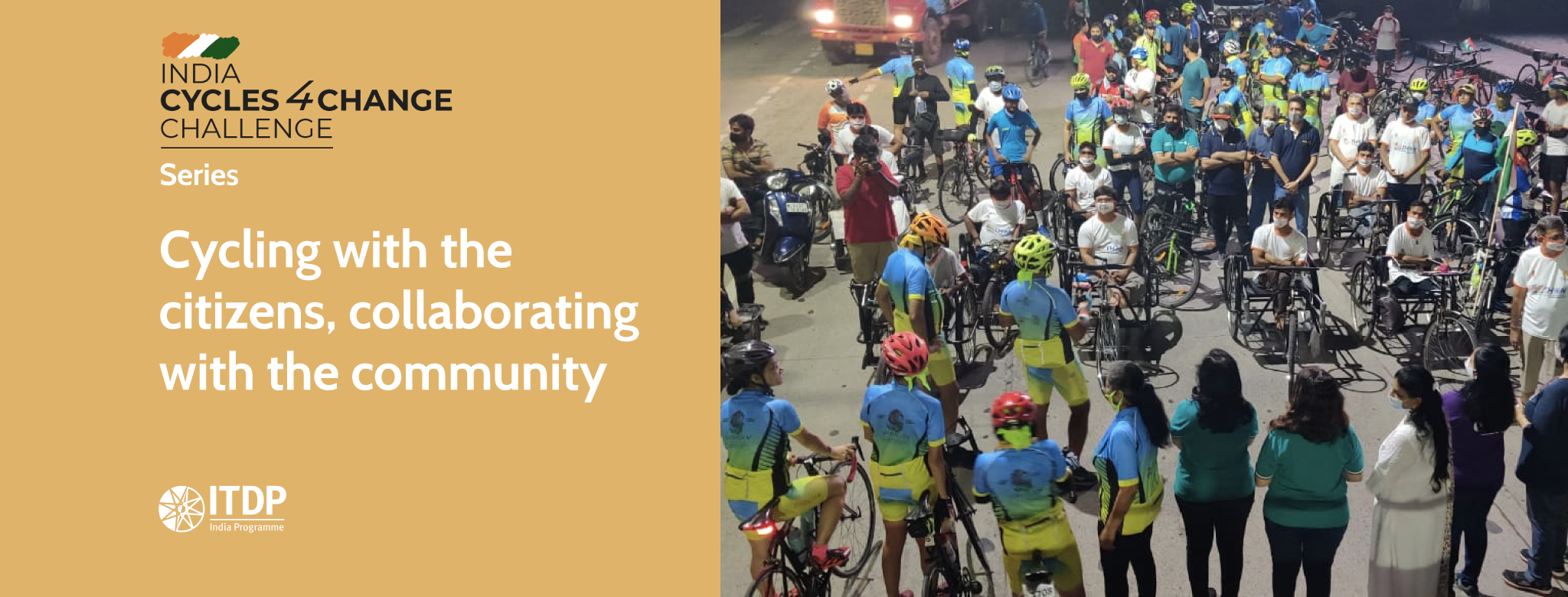As published in the Sustainable Transport Magazine
As we close the chapter on two of India’s landmark mobility initiatives, the India Cycles4Change (C4C) and Streets4People Challenges (S4P), there is much to celebrate from this transformative four-year journey. Four years is also the time it takes to prepare for the Olympics, and just as the world has witnessed the spirit of the 2024 Paris Summer Games, these efforts share many things in common. Just like Olympic athletes need consistent training and resources to shine on the global stage, Indian cities received continuous support and guidance to shine throughout these Challenges. With help from national and local experts, they built a network of partners, engaged with their community, and strengthened their capacity through open dialogue and collaboration, ensuring they had everything they needed to create safer and more accessible streets for all.
In 2020, India’s Smart Cities Mission, Ministry of Housing and Urban Affairs (MoHUA), and ITDP India collaboratively launched the India Cyles4Change and Streets4People Challenges with a vision to transform Indian cities with improved walking and cycling infrastructure. Many of India’s streets have become increasingly dangerous for the most vulnerable, with pedestrians accounting for 20% of road fatalities in 2022, according to the Ministry of Road Transport and Highways. This is a staggering 32,800 lives lost. Also, India’s air pollution and quality ranks among the worst in the world. To combat this, we need more people to choose walking and cycling over private vehicles where possible. Cities must create a safer and more conducive environment for both new and existing pedestrians and cyclists for this shift to happen.
However, at the onset of the two Challenges, the team began to realize that expecting quick on-ground transformation was fairly ambitious. While 117 cities signed up for the Challenges, they were all at different points in their journeys, with respect to their understanding of sustainable mobility, resources, infrastructure, geography, and institutional ecosystems. Even though this was a friendly and healthy competition, fairness would be compromised if the participants started from different points. Thus, the team went back to the drawing board and changed the rules of the game itself. It was no longer just about the scale of on-the-ground transformations; equally important would be promoting the dialogue around walking and cycling, improving community engagement, and building a stronger foundation for capacity building and institutional reform. Over the next few years, these programs became a marathon, rather than a sprint.

The Streets4People Challenge reimagined city streets as places for civic engagement. Image: Smart Cities Mission / ITDP India
The government and ITDP India began by channeling the focus on three aspects that ensured our efforts were sustained throughout the four years. One, by creating an ecosystem of champions from city leaders to local communities for support; two, by encouraging cities to engage with citizens to get their buy-in at the onset; and three, by building their technical capacities at regular intervals in the most innovative way possible. The true success of these Challenges came from lasting lessons that have set the cities on a course for change for years to come.
At the beginning of the Challenges, cities were required to pilot interventions locally and gather community feedback before making them permanent interventions. Many successfully implemented changes using tactical urbanism to test designs that could be adjusted based on how people engaged with spaces. For instance, the city of Kohima transformed an old parking lot into a vibrant community space for pedestrians and cyclists, featuring food vendors, pop-up seating, colorful artwork, and new landscaping. They also programmed street carnivals and engagement activities to activate the community within the space. Some cities that lacked such expertise connected with support from partners such as civil society organizations, design experts, resident groups, and cycling advocates. The success of these partnerships underscored the importance of creating local communities of champions as knowledgeable stakeholders who could guide cities through the design and implementation process, ensuring that efforts were both sustainable and impactful.
While this was happening at the city-level, a burgeoning ecosystem was also taking shape at the national level with these Challenges. The commitment to promoting active mobility had full support from the national Ministry, driven by strong leadership that believed in the cause. It became evident that many city leaders were inspired to become champions after seeing the dedication of the Ministry. The national ecosystem was further strengthened by the collaboration with organizations like ITDP India, which played a crucial role in providing technical expertise. This guaranteed that, while cities had the financial and national support to implement the Challenges, they could also benefit from strong technical guidance to ensure their concerns were addressed throughout the process.
Of course, no best practice can be formed without citizen and public engagement. Cities initially faced challenges in motivating their people, shifting perceptions, and breaking stereotypes
around cycling and walking. Many residents did not view these as practical alternatives to personal vehicles and resistance to streetscape changes made progress challenging. However, as the
programs progressed, engaging communities in decision-making was crucial to fostering a sense of ownership, leading to greater acceptance and behavior change. Take the city of Davanagere,
for example. They ran a creative campaign that made cycling ‘cool’ again with themed merchandise, bike rallies, and citywide promotions. Local residents soon embraced cycling en masse,
rallying behind the vision for safer, more sustainable mobility. That is the power of bringing people along for the ride.

The Cycles4Change Challenge encouraged cities to improve safe, connected cycling infrastructure. Image: Smart Cities Mission / ITDP India
Each city’s own growth remained at heart of this work, which is why building capacity was crucial for the success of these Challenges. Having the right support to build expertise and skillsets for cities was part of a winning strategy. Throughout the Challenges, ITDP India helped host 18 sessions for cities, including national Healthy Streets and Public Spaces workshops in cities like Bengaluru, Chandigarh, and Pimpri Chinchwad, and interactive design clinics for city leaders to receive input from experts. Over 85 toolkits and technical resources on planning, budgeting, and infrastructure were developed and disseminated during these workshops.
To make capacity building even more engaging, ITDP India also introduced an innovative game during these workshops. This fun and interactive approach helped city leaders learn how to
develop a Healthy Streets Plan, map out a multi-year action plan, and identify key interventions in three crucial areas: action, foundation, and communication. This ‘gamification’ strategy
helped the leaders immerse themselves in a hands-on learning experience, moving beyond traditional presentations to explore the complexities of sustainable mobility.
By January 2024, 15 cities emerged as leaders, with many others making great strides in changing their streets. Across 33 cities, over 350 kilometers of improved footpaths and more than 220 kilometers of cycle tracks were developed, while 48 cities launched projects to revamp over 1,400 kilometers of streets. Plus, 15 cities adopted Healthy Streets Policies, 18 set up dedicated Healthy Streets groups, and 17 developed their three-year action plans. To top it off, 33 cities formed Apex Committees to keep the momentum going with future collaboration.
As we close the transformative chapter of the Cycles4Change and Streets4People Challenges, these initiatives have set the stage for long-term change nationwide. Success was not merely about achieving quick wins; it was about laying the groundwork for resilience by mainstreaming dialogues, building capacity, and fostering an ecosystem of walking and cycling champions.
Like coaches preparing a team for victory, the Ministry and ITDP India helped lay a solid foundation for scaling walking and cycling options across India. Now, it is important for the national government to capitalize on this momentum by allocating more budgets and strengthening policies and institutional reforms in favor of safe, equitable streets for everyone. Let the next Challenge begin!
Written by Kashmir Medhora Dubhash, Senior Programme Manager – Communications, Partnerships and Development
Technical inputs Smritika Srinivasan, Senior Associate – Urban Development


























